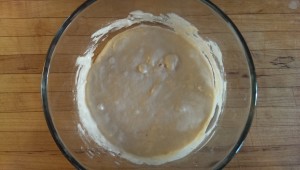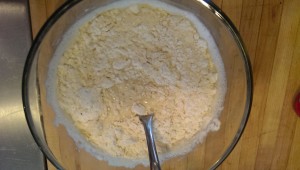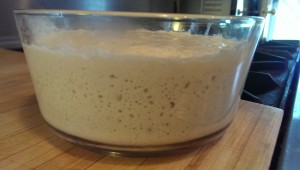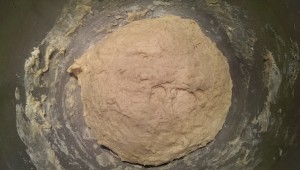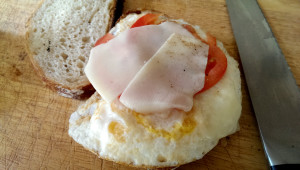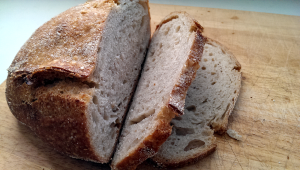 It’s been warm here in Central PA for the last few weeks so it’s a wonder that I concocted this recipe. Oatmeal and Rye make me think that it would pair well with hearty soups or stews but, as it turns out, this light and tangy bread is a nice companion to PB&J, butter, eggs, or just about anything else. The flavors are pretty subtle but definitely there. It’s certainly a bread whose recipe I’ll keep around and I’ll probably try it again this winter, maybe with a hearty soup!
It’s been warm here in Central PA for the last few weeks so it’s a wonder that I concocted this recipe. Oatmeal and Rye make me think that it would pair well with hearty soups or stews but, as it turns out, this light and tangy bread is a nice companion to PB&J, butter, eggs, or just about anything else. The flavors are pretty subtle but definitely there. It’s certainly a bread whose recipe I’ll keep around and I’ll probably try it again this winter, maybe with a hearty soup!
To make this loaf, I started with my mature levain, which is just a 100% hydration AP flour starter. I added 25g of it to 100g of rye flour and 100g of King Arthur AP flour, resulting in what I dub the yin-yang starter for the weak AP flour and the strong rye.
I then added enough water to make it a 100% hydration starter, or 225g. After about 10 hours my starter was alive, bubbly, smelling healthy, and looking good!
I then proceeded as follows.
- 350g of the starter
- 600g of KA AP flour
- 100g of freshly milled oat flour
- 425g of water
- 25g of salt
Mix all the ingredients together and let sit for 30 minutes. Stretch and fold every 30 minutes for the first 3 hours per the Tartine book method. After the last stretch and fold, divide the dough and preshape. Let the dough relax and shape, then place in your proofing basket. I put my loaves in the refrigerator overnight but you could let it rise for another 2-3 hours and bake right away. It was hot in our kitchen so I decided to wait until it was a bit cooler the next day.
- Preheat your oven to 450°F.
- Turn your proofed loaf on to a peel and slash the bread as desired.
- Cook under steam for the first 15 minutes and complete without steam until done, roughly 30 minutes more.
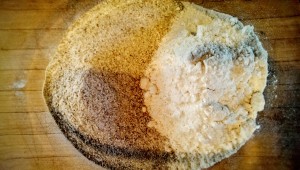
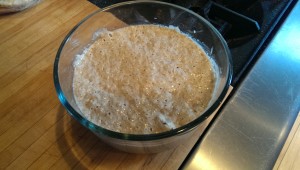
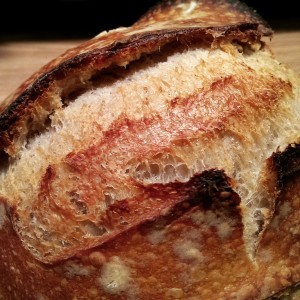 For this inaugural post, I thought it would be fitting to share with you something that is a little bit of me. I have worked on this bread formula for a little while and at this moment in time, is my ‘go-to’ bread. I make it often and the family loves it, so it this post is about my 15% whole wheat sourdough table loaf.
For this inaugural post, I thought it would be fitting to share with you something that is a little bit of me. I have worked on this bread formula for a little while and at this moment in time, is my ‘go-to’ bread. I make it often and the family loves it, so it this post is about my 15% whole wheat sourdough table loaf.